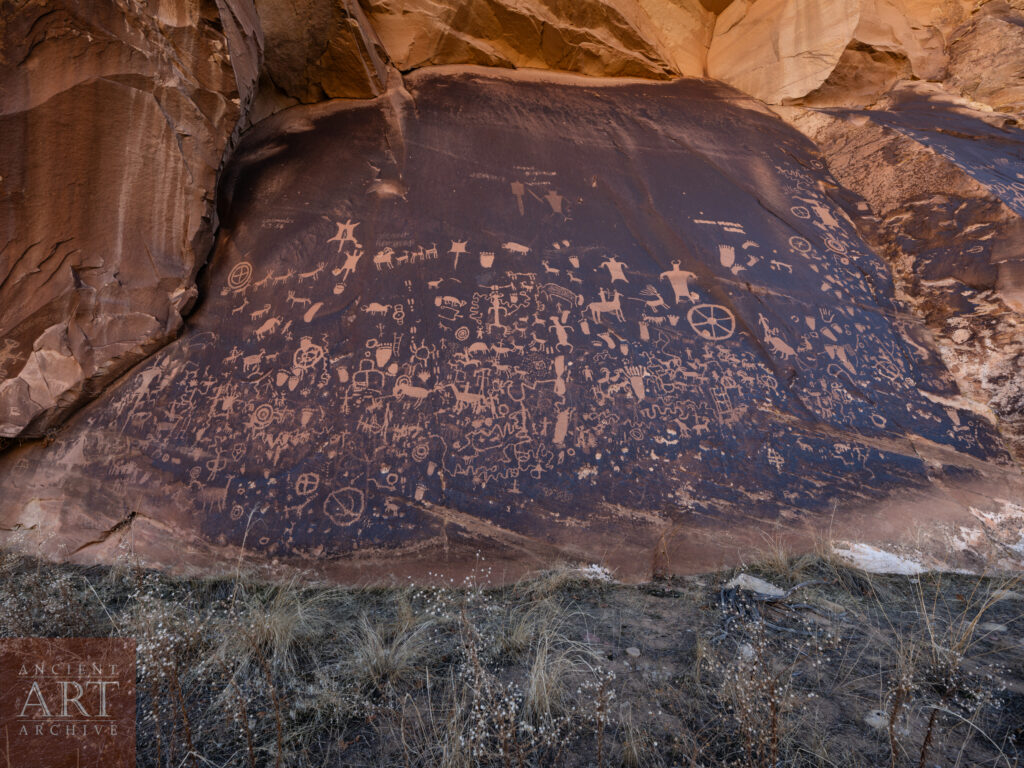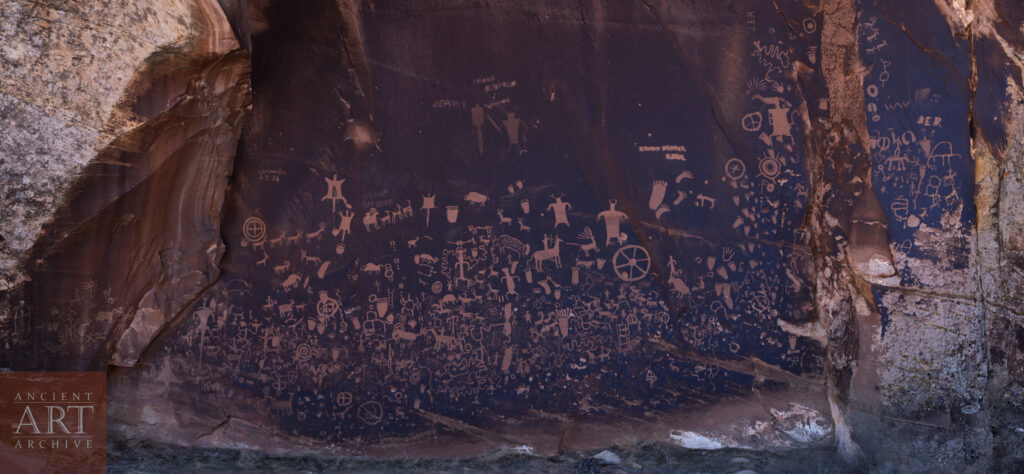
Newspaper Rock State Historic Site, located in southeastern Utah near the entrance to Canyonlands National Park, is a remarkable archaeological site featuring one of the largest and best-preserved collections of petroglyphs in the United States. The site’s main attraction is a 200-square-foot sandstone panel densely covered with hundreds of petroglyphs, etched by Native American cultures over a span of 2,000 years. These inscriptions, created by Ancestral Puebloans, Fremont, Ute, and other indigenous groups, depict human figures, animals, hunting scenes, geometric shapes, and mysterious symbols, many of which remain undeciphered.
The site’s name, “Newspaper Rock,” reflects its supposed function as a historical communication hub, though the exact purpose of the carvings—whether storytelling, ceremonial use, or marking trails—remains speculative. The petroglyphs were created by pecking away the dark desert varnish to reveal the lighter sandstone beneath, resulting in a striking visual contrast.
Easily accessible off Utah State Route 211, the site features interpretive signage and a viewing platform for visitors to appreciate this ancient art while protecting it from damage. Designated as a Utah State Historic Monument in 1961, Newspaper Rock serves as a valuable cultural and historical record, providing a fascinating glimpse into the lives and beliefs of the region’s early inhabitants.
